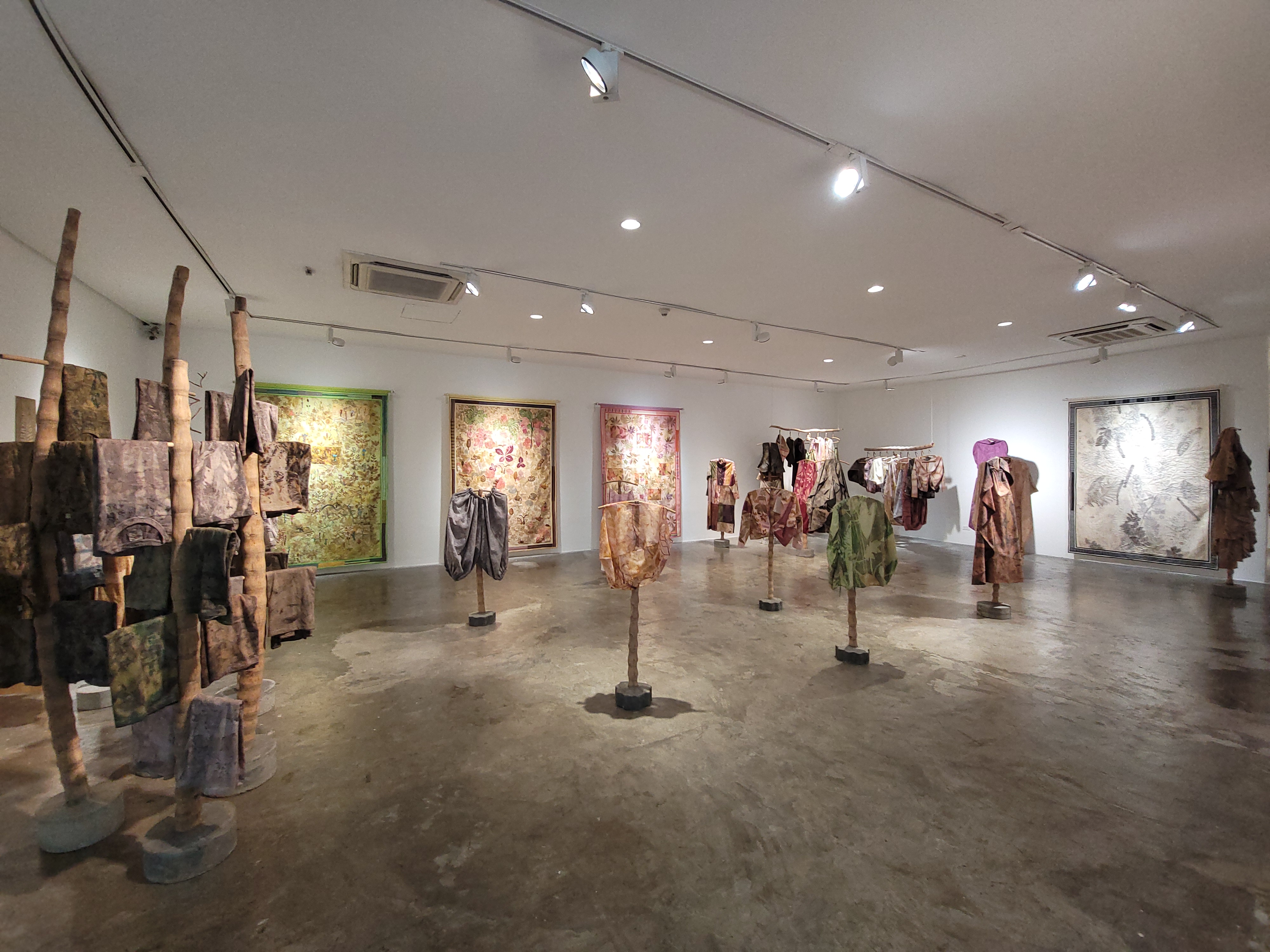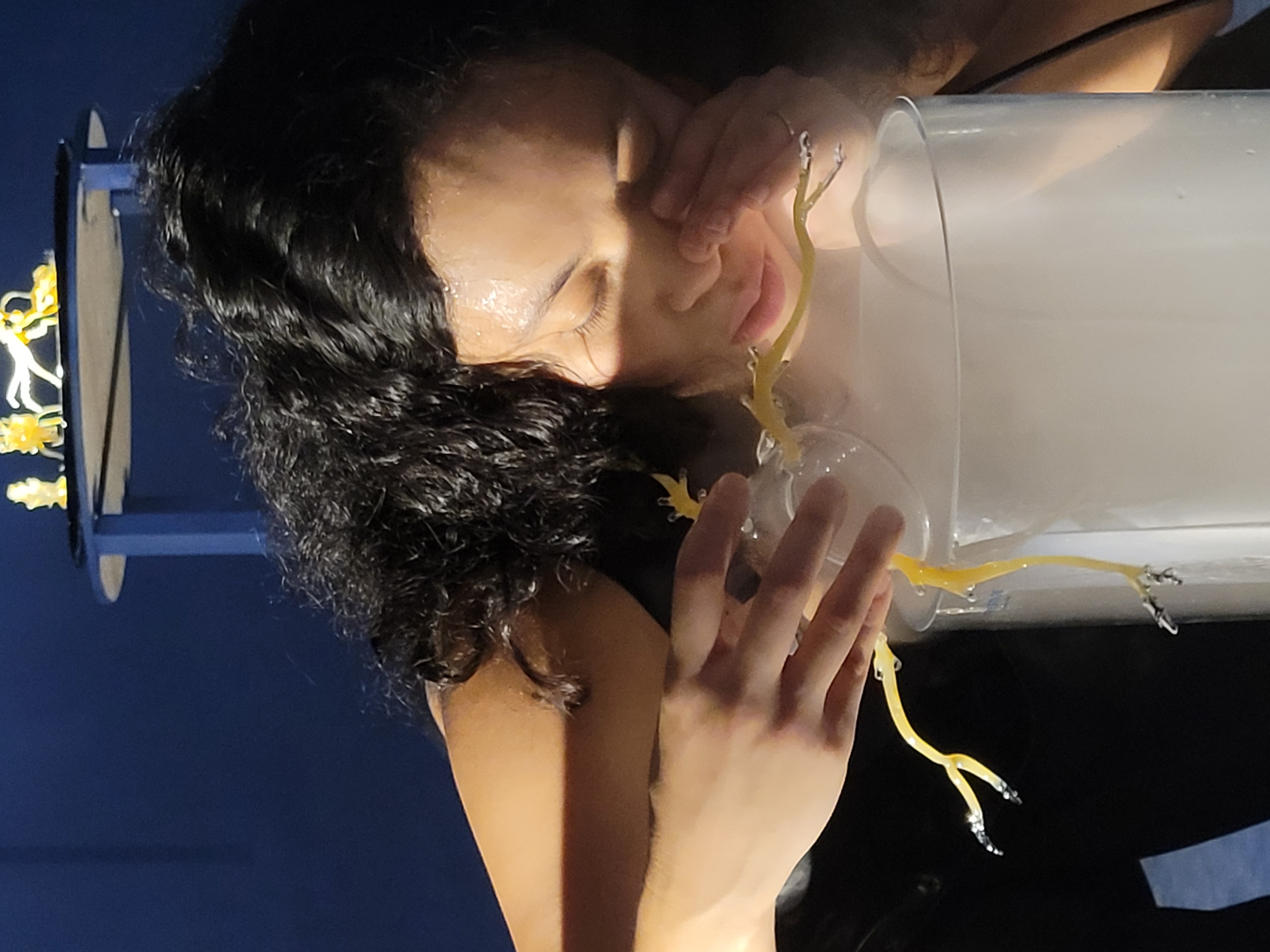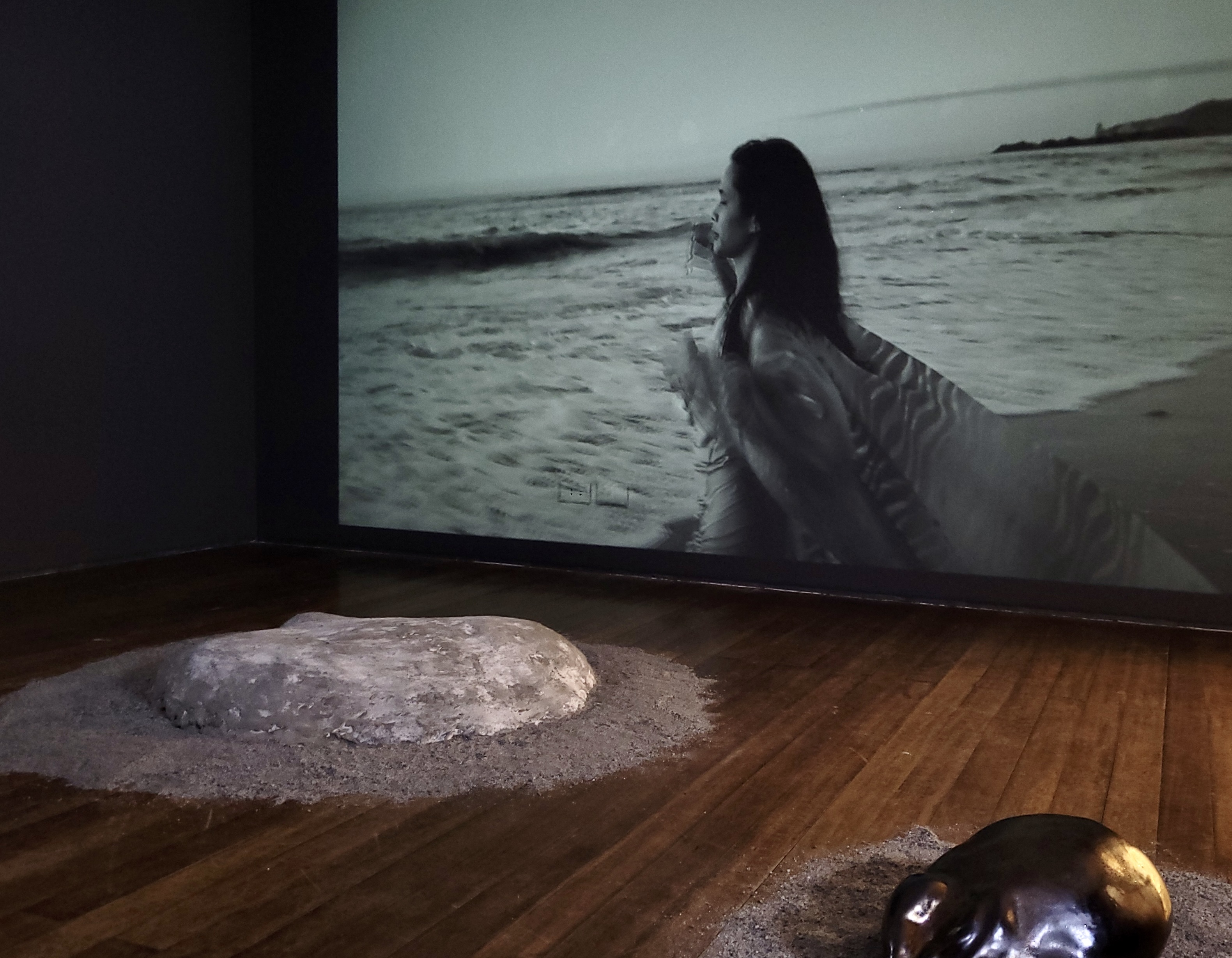“Were you ever impressed by Amorsolo’s painting? Did you ever admire his works?” The young critic asked as he sat across the modernist, Victorio Edades, who had been entertaining queries about his life and art.
“No,” groaned the artist with a tone of vehement disgust. “His paintings were like embroidery, just like a girl’s silk dress. Too fine. In a painting I look for character and vigor. Amorsolo’s paintings were like the work of a gentle boy or a gentle girl: sweet and charming. I had been taught to capture strength in a painting.”
Edades was not alone in his sentiment about Fernando Amorsolo’s paintings being too ‘gentle.’ Diosdado Lorenzo felt the same although he was more considerate in his delivery.1 It’s funny how they seem to be allergic to the idea that strength can coexist with gentleness. The gender undertones in this conversation, and the tension that arose in the merging of seemingly two opposing concepts, reminded me of an article written by Eric Caruncho for the Inquirer. Here, he talks about the resurgence of the social realist movement in the country at the height of Duterte’s killing spree. Recounting the names of the artists in the 1970s who, through their works, fought against Marcos’ tyranny, he included Imelda Cajipe-Endaya and Karen Ocampo Flores along with the names of eight male contemporaries.2 The article, “The Return of the Sons of Philippine Social Realism” (emphasis mine) proceeded with the paintings, sketches, and murals of male artists. And just last year, Carla Gamalinda paralleled the game of basketball with the persisting and toxic manliness that mar the scene.3
The lopsidedness of opportunities, recognition, and power given to genders remain to be a huge problem in the arts. Many critics before me have already written copious books and articles on this subject. Flaudette May Datuin, for one, traces how ‘great art’ had been historically defined by men, molding what she calls ‘the masculine norm’ which also encapsulates the attitudes in the above-mentioned anecdotes.
As a writer, I am constantly drawn to ‘the feminine,’ and the ways it is used in art so that of the plethora of shows and fairs that unfurled last February, Goldie Poblador’s The Rise of the Medusa, along with a three-person show by Geraldine Javier, Marionne Contreras, and Steffi Cua (Earthbound at MO_Space) and a solo show by Pam Quinto (The Weight of Being: A Living Thing Cracked Open at Finale Art File), made a lasting impression in my mind.
I realize that there were three factors that the exhibitions shared. First, that all made use of nature and the body as medium, themes, and image. Second, they featured non-traditional forms that expand how art can be instrumentalized as a catalyst for change. And, perhaps the most obvious reason at this point, that all three exhibits were led by women.
In this light, it makes much sense to revisit the concept of ‘the feminine’ which Datuin defines as “an intersubjective, political position. One that will really mark and make a difference to the masculine norm.”4 Hence, it is described by many feminist critics as an outlier—an ‘elsewhere.’
The feminine, as a lived position, is defined by certain attitudes, values, and traits rooted in male idealizations of women, such as tenderness, passivity, otherness/selflessness, nurturing, submissiveness, and being emotional. As the succeeding discussion will show, it also extends to spaces, processes/activities, and medium. These are not qualities that inherently exist in women’s body and psyche, but positions carved for them to fill by and in society.
Much has changed over the years. For one, social media bears witness to how women and the queer community have recognized the power of the feminine, even the hyperfeminine, as both aesthetic and attitude, for subversion against the systems in place. Even this shift is felt in the arts.
Bitch, temptress, witch—women who do not conform to the mold given them have been called such names. But in more recent years, we have learned to reclaim them. Such was the case for Goldie Poblador.
The artist’s corner at the ArtFairPH/Projects space showcased her miniscule glass sculptures whose limbs curved delicately, formed to share semblances of marine fauna along the Verde island. Poblador, seated, legs crossed on the floor with eyes shut, sprung into a half-hour long multisensory performance in three acts. Writhing violently at the scent of oil slick, she embodied the tragic fate of aquatic ecosystems and wildlife under the oppressive hands of an anthropocentric era. A devious laugh escaped her, making the walls seem to tremble at her wrath.
Poblador’s unnerving work and performance was contrasted by my experience with the three-person show of Javier, Contreras, and Cua. My first trip to the Earthbound exhibition at MO_Space was a sneak out during lunch break at my day job. It was peppered with bamboo poles draped in garments colored and printed with natural dyes and organic patterns. Sharp corners were nowhere to be seen in their silhouettes, and the fabric was light and breezy. Upon the walls stretched broad panels of textiles, ornamented with colorfully embroidered flora, fauna, and poetry. My first thought: How can these sell as art?
The impulse to ask the money question about fabric art, specifically one that gives the impression of “overpriced” clothes, stems from a historical division between art and craft inherited from Westernized traditions. For centuries, binaries structured knowledge: mind versus body, man versus woman, art versus craft. The intellect, aligned with men, was privileged, while labor-intensive and material-based practices like sewing were dismissed as women’s work and were looked down upon.
Needless to say, this exhibition gravitated heavily towards the latter with processes like washing, sewing, dyeing, and foraging, among others. These activities are done away from the masculine ‘playing field’ of our society (out-of-sight sites); inside houses (the women’s realm) and forests (whose sources are mercilessly exploited).
But the three fates—Javier, Contreras, and Cua—showed us how art can be functional while retaining soul, or one that elevates life in all beings. They gave us a glimpse of an alternative.
“What we had was a gesture—an offering—toward a more sustainable approach to garment production and related industries. We have long been working with textiles, creating eco-prints, and engaging with nature in our practices… More than asking a question, we took action. If the exhibition was received as raising this particular question, then perhaps we have done something right,” shares Contreras in an interview.
This importance placed upon the existence of a complexity in being is one I also find in Pam Quinto’s solo show. Inspired by Albert Camus’s The Myth of Sisyphus, the show centered on the cyclical pains of being and becoming. Interestingly, while it was mounted as a solo show and talked about self-formation, collaboration—between individual artists of different backgrounds—was a chief factor in its creation.5
A short film captured Quinto moving gracefully along the coastline, clothed in silky drapery that unified her with the wind and the waves. She danced, sprinted, and gazed at the horizon, shifting between stillness and frenzy, melancholy and release. On the wall, a poem shaped like a body hung, casting a kind of prayer to accompany the sculptural works of Quinto that appeared like fossils to her birth.
But identity here is also processed through collaboration. “Most of my collaborators for this project are queer artists,” Quinto shares. “The works and text in the show have passed through the filter of queer experience. The body in the poem? I see that as both the female body and the queer body.” Ultimately, the exhibition uplifted and honored a multiplicity of bodies, identities, and experiences, which I find pleasantly opposed to the nudes of female bodies that many male artists then until now gorge over.
Only a fool would deny that life comes in a variety of forms and bodies. What the three exhibitions demonstrate, through arrangements that negotiate with and through the feminine, is a certain openness to the multiplicity that exists and compassion the world is in dire need of.
On Moving Forward
I joined an all-women’s gathering at the Vargas Museum last March. The table was laden with foraged flowers, twigs, and leaves, and the seats were gradually filled by critics, artists, curators, and cultural workers. No strict agenda was set for the day aside from carving space for women in the scene to share their experiences, struggles, and joys. Questions were mindfully prepared, slowly easing everyone into an afternoon of laidback conversations. We were reaching the end of the gathering when we stumbled upon an intriguing question: what brings you joy in being a woman in the art scene?
It goes without saying that we all understood how our experiences in the scene were mired by our gender, but after a bit of thinking, one-by-one, many jumped in to share. One was glad to find that art, compared to other industries, gives more freedom in expressing oneself. Another was grateful for the experience of collaborating with women and the shared-care among them in projects that truly aim for change. I personally shared how inspiring it was to see that other women have gone before me to address the existing gender gaps. Funnily, we had one male participant who joined us. He was there as an ally despite being obligated to be there being a staff of the museum. He shared, “Naniniwala ako na kailangan pa natin ng ‘feminine’ energy sa mundo. Hindi ibig sabihin noon na puro babae lang ang namumuno, but that everyone would benefit if we all turn up traits associated with being feminine.”
This article is not about assigning mediums or themes to specific genders, nor about labeling artists as feminist or not. Rather, the focus is on unearthing the histories that have relegated certain practices, objects, themes—and even people—as ‘inferior.’ Understanding these histories allows us to recognize ongoing shifts toward balance. In doing so, we allow for a broader selection from which we can discern how to best orient ourselves and art to the world. Perhaps then it would be easier to see how gentleness and strength coexist.
All images taken by the author.
Notes
[1] Reyes, Cid. Conversations on Philippine art. Manila, Philippines: Cultural Center of the Philippines, 1989.
[2] “The Return of the Sons of Philippine Social Realism,” Lifestyle.INQ, August 27, 2019, https://lifestyle.inquirer.net/344081/the-return-of-the-sons-of-philippine-social-realism/.
[3] https://cartellino.com/features/2024/11/18/Reflections-on-the-Philippine-art-scenes-manly-competitions-and-dirty-plays
[4] Flaudette May Datuin, “What Is Women’s Art, or Is There Such a Thing?,” Suri Sining: The Art Studies Anthology, 2011, 263–71.
[5] Quinto collaborated with Ea Torrado (movement), Santi Obcena (costume), Coeli San Luis (music), Alfonso Manalastas (poem), and Rombutan (camera work)
References
Datuin, Flaudette May. “What Is Women’s Art, or Is There Such a Thing?” Suri Sining: The Art Studies Anthology, 2011, 263–71.
“Reflections on the Philippine Art Scene’s Manly Competitions and Dirty Plays.” Cartellino. Accessed April 23, 2025. https://cartellino.com/features/2024/11/18/Reflections-on-the-Philippine-art-scenes-manly-competitions-and-dirty-plays.
“The Return of the Sons of Philippine Social Realism.” Lifestyle.INQ, August 27, 2019. https://lifestyle.inquirer.net/344081/the-return-of-the-sons-of-philippine-social-realism/.
Reyes, Cid. Conversations on Philippine art. Manila, Philippines: Cultural Center of the Philippines, 1989.
Jodie Jose graduated with an Art Studies degree at the University of the Philippines. She has worked with artists, galleries, and institutions including the Cultural Center of the Philippines, where her work centred on the historical ties and value of needlework to women particularly in the work of contemporary Filipina artists. Her other explorations include art and technology.



